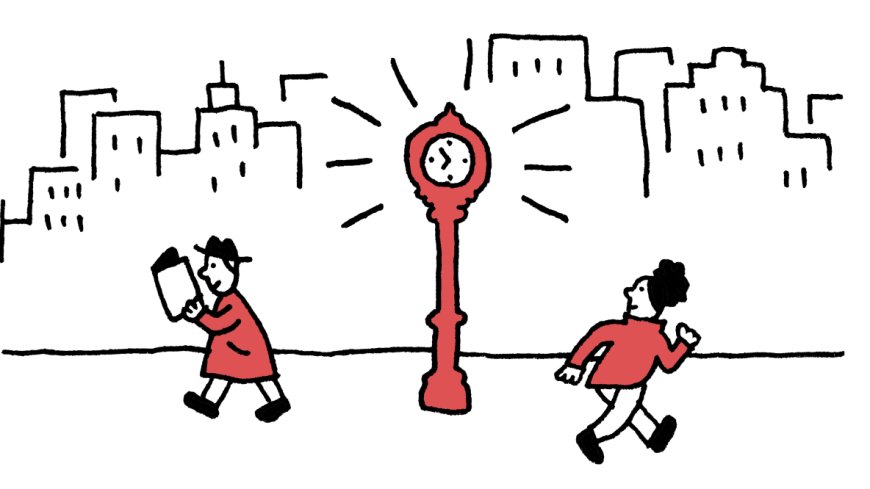Has the Robotics Revolution Arrived?
The DailyYou’re reading The New Yorker’s daily newsletter, a guide to our top stories, featuring exclusive insights from our writers and editors. Sign up to receive it in your in-box.In today’s newsletter, James Somers on how robots learn. And then:Why is gratitude so difficult?The Democratic Party’s failure on the opioid epidemicRachel Syme’s holiday gift guide“This is the year that people really realized that you can build general-purpose robots,” Carolina Parada, the leader of the robotics team at Google DeepMind, said recently.Illustration by Tameem SankariA Revolution in How Robots LearnA future generation of robots will not be programmed to complete specific tasks. Instead, they will use A.I. to teach themselves.Every time a video would go viral showing a humanoid robot jumping, dancing, or doing some other remarkable physical activity, there was a feeling among the general public that our wildest science-fiction dreams were just moments from coming to life. But inside the field of robotics itself, developments were happening far more slowly than in other similar technological fields, and straightforward practical applications, such as making a cup of coffee, remained out of reach. “A hopelessness hung over the whole enterprise,” James Somers writes, in this week’s issue. But that is changing—fast. “The last two years have been a dramatically steeper progress curve,” Carolina Parada, the leader of the robotics team at Google DeepMind, tells Somers. “This is the year that people really realized that you can build general-purpose robots.” The key development is that robots will no longer need to be programmed; instead they will learn through artificial intelligence, and then share that knowledge widely. “Once one robot has learned how to tie shoes, all of them can do it,” Somers writes. “Imagine copying and pasting not just a recipe for an omelette but the very act of making it.”Read or listen to the story »The LedeJ. D. Vance at a campaign rally in Philadelphia, in August, 2024.Photograph by Ryan Collerd / AFP / GettyDid the Opioid Epidemic Fuel Donald Trump’s Return to the White House?New research suggests that the Democrats’ struggles in communities battling fentanyl addiction had little to do with economic theory or messaging, Benjamin Wallace-Wells reports. It was, more simply, a failure of political attention. Read the story »More Top StoriesWhy Is Gratitude So Difficult?Little Treats Galore: A Holiday Gift GuideThe Operatic Drama of “Maria” Misses Its Cue“The Seed of the Sacred Fig” Is a Shattering Epic of ReproachA Ninety-Nine-Year-Old Lawyer’s Final Case in “Frank”Daily Cartoon“I’d like to give up my seat to someone who can tolerate their family during the holidays.”Cartoon by Anjali ChandrashekarCopy link to cartoonCopy link to cartoonLink copiedShopShopMore Fun & GamesPlay today’s moderately challenging puzzle. A clue: Hip-hop journalist who hosted the Fox series “Pump It Up!” Nine letters.P.S. After his brief moment of consideration for Attorney General, Matt Gaetz swiftly moved on to a new venture: selling personalized videos (birthday wishes, pep talks, congratulations) on Cameo. Naomi Fry has written about how the video service took off during the pandemic, and why it offers a new way to think about our interactions with celebrities. “The transactional nature is out in the open,” she writes, “and videos swerve between overt, unapologetic shilling and surprisingly earnest sentiment.”

In today’s newsletter, James Somers on how robots learn. And then:
- Why is gratitude so difficult?
- The Democratic Party’s failure on the opioid epidemic
- Rachel Syme’s holiday gift guide
A Revolution in How Robots Learn
A future generation of robots will not be programmed to complete specific tasks. Instead, they will use A.I. to teach themselves.
Every time a video would go viral showing a humanoid robot jumping, dancing, or doing some other remarkable physical activity, there was a feeling among the general public that our wildest science-fiction dreams were just moments from coming to life. But inside the field of robotics itself, developments were happening far more slowly than in other similar technological fields, and straightforward practical applications, such as making a cup of coffee, remained out of reach. “A hopelessness hung over the whole enterprise,” James Somers writes, in this week’s issue. But that is changing—fast. “The last two years have been a dramatically steeper progress curve,” Carolina Parada, the leader of the robotics team at Google DeepMind, tells Somers. “This is the year that people really realized that you can build general-purpose robots.” The key development is that robots will no longer need to be programmed; instead they will learn through artificial intelligence, and then share that knowledge widely. “Once one robot has learned how to tie shoes, all of them can do it,” Somers writes. “Imagine copying and pasting not just a recipe for an omelette but the very act of making it.”Read or listen to the story »
The Lede
Did the Opioid Epidemic Fuel Donald Trump’s Return to the White House?
New research suggests that the Democrats’ struggles in communities battling fentanyl addiction had little to do with economic theory or messaging, Benjamin Wallace-Wells reports. It was, more simply, a failure of political attention. Read the story »
- Why Is Gratitude So Difficult?
- Little Treats Galore: A Holiday Gift Guide
- The Operatic Drama of “Maria” Misses Its Cue
- “The Seed of the Sacred Fig” Is a Shattering Epic of Reproach
- A Ninety-Nine-Year-Old Lawyer’s Final Case in “Frank”
Daily Cartoon
P.S. After his brief moment of consideration for Attorney General, Matt Gaetz swiftly moved on to a new venture: selling personalized videos (birthday wishes, pep talks, congratulations) on Cameo. Naomi Fry has written about how the video service took off during the pandemic, and why it offers a new way to think about our interactions with celebrities. “The transactional nature is out in the open,” she writes, “and videos swerve between overt, unapologetic shilling and surprisingly earnest sentiment.”






























































